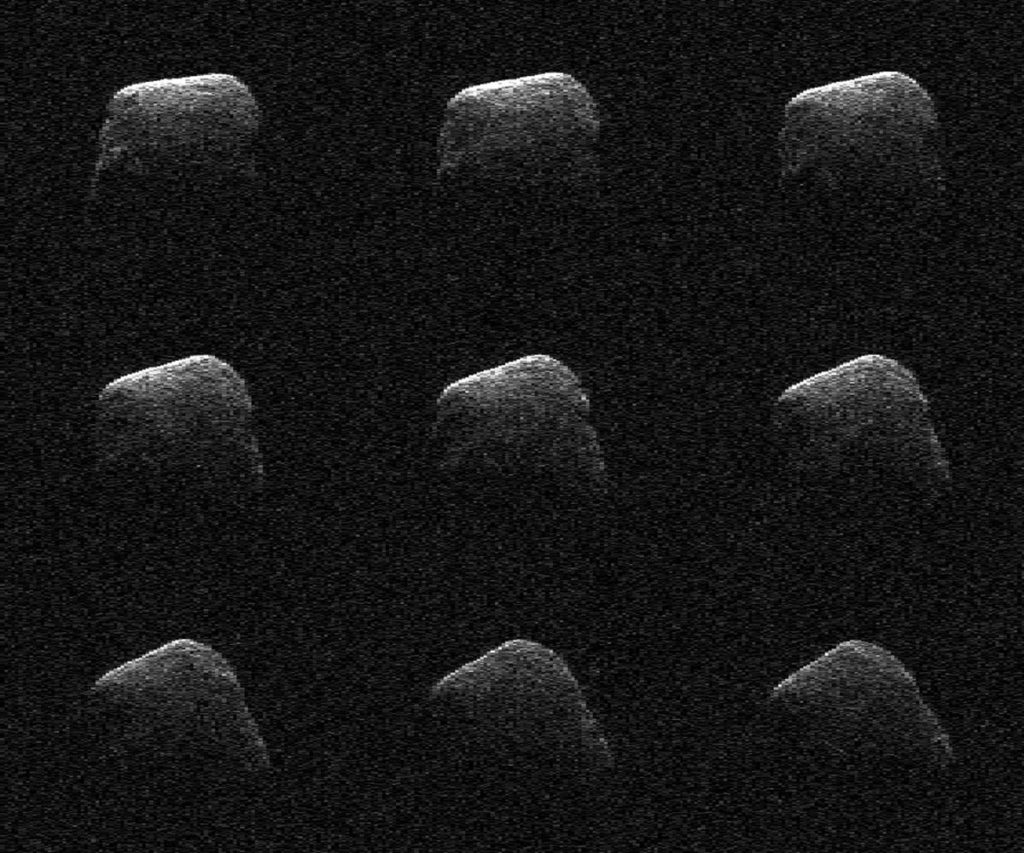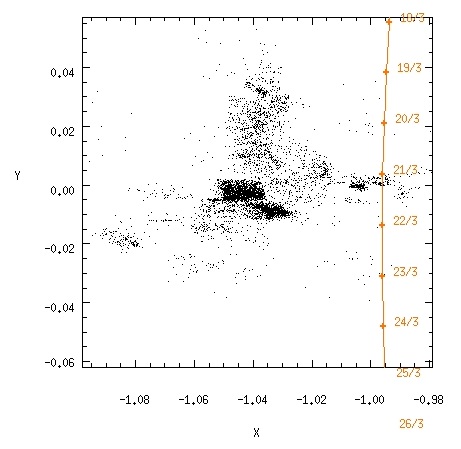On March 21st, 2023, a meteor outburst originating from a rare Near-Earth comet could be observed from Southern hemispheric regions.
P/2016 BA14, a rare Near-Earth Comet
P/2016 BA14 (Pan-STARRS) is one of of the rare 120 Near-Earth Comet (NEC) out of the 31 600 Near-Eart Objects (NEO) listed by the Center for NEO Studies (CNEOS/JPL/NASA). First thought to be a 250 meter wide asteroid while it was discovered in January 2016, Russian astronomer Denis Denisenko quickly noticed the similarities between 2016 BA14 and 252P/LINEAR orbits, discovered a few years ago, in 2000. The month following this discovery, complementary observations from Michael Kelley and Matthew Knight with the Discovery Channel Telescope of Lowell Observatory (Arizona) confirmed the cometary nature of the object, and the link between the two objects: P/2016 BA14 (Pan-STARRS) could be a fragment of 252P/LINEAR. In March 2016, the two objects came very close from the Earth, allowing close-by radar studies (Figure 1). P/2016 BA14 close fly-by (3,4 millions of km) was one of the closest ever recorded from a comet, the only closest one being D/1770 L1 (Lexell) in 1770 (2,2 millions of km)! It was followed, the same day, by a 5,3 millions kilometers approach of its parent body, 252P/LINEAR.

Meteor outburst on March 21, 2023?
252P/LINEAR was predicted to be a potential source of meteors in 2016 (by Peter Jenniskens, Jérémie Vaubaillon and Mikhail Maslov). It was thus logical that P/2016 BA14 (Pan-STARRS) could also be! Regina Rudawska predicted some potential activity in 2018, which was not observed. Jérémie Vaubaillon (Paris Observatory) models predict that in 2023, the Earth could cross a cloud of meteoroids (Figure 2) that would have been released from the comet nucleus which has been reviewed to be around 1 km diameter, seen its low albedo (3%, which is as dark as a piece of coal).

Activity may thus occur on March 21, 2023, between 00h and 04h UT. This is a perfect timing, as the New Moon won’t be a nuisance to monitor some meteor activity from the source. Southern hemisphere observers should thus be alerted as the radiant is predicted to be located near the position of R.A. = 6 h ; Dec. = -51°. This position is located close to the bright star Canopus (alpha Carinae). Meteors originating from this source should appear very slow, as the atmospheric entry of meteoroid is theoretically close to 17 km/s.
All potential observers are strongly encouraged to check this source, as their observations (positive or negative) will be very useful to understand meteoroids dynamics originating from this comet fragment, to improve the models, and thus make future predictions even more accurate. All observations can be submitted to the International Meteor Organization via its online visual observing report.



 You saw something bright and fast? Like a huge shooting star? Report it: it may be a fireball.
You saw something bright and fast? Like a huge shooting star? Report it: it may be a fireball.  You counted meteors last night? Share your results with us!
You counted meteors last night? Share your results with us!  You took a photo of a meteor or fireball? You have a screenshot of your cam? Share it with us!
You took a photo of a meteor or fireball? You have a screenshot of your cam? Share it with us!  You caught a meteor or fireball on video? Share your video with us!
You caught a meteor or fireball on video? Share your video with us!